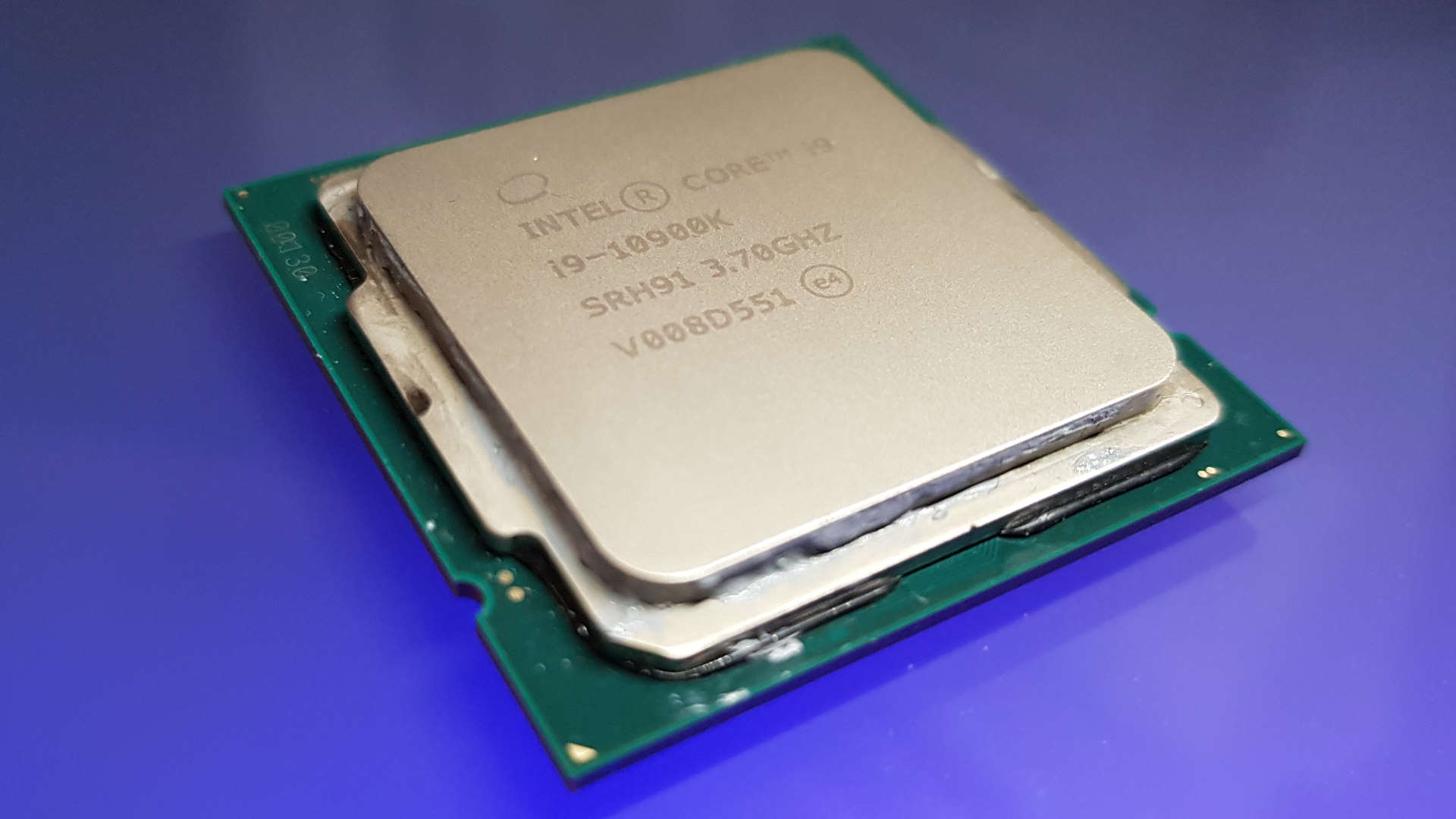Our Verdict
The world's fastest gaming processor, and something that Intel will hang all its marketing on, but when it comes to real-world performance it doesn't really make a lot of sense as the Comet Lake CPU to drop into your gaming PC.
For
- Fastest gaming performance
- Overclocking potential
Against
- GPU has far greater impact on fps
- Top performance requires power
PC Gamer's got your back
For your delight and delectation, I present to you the Intel Core i9 10900K. This is the top desktop CPU in the 10th Gen Intel Comet Lake lineup and represents the first time the company has jammed 10 processing cores into a single mainstream processor.
So yes, rejoice, for Comet Lake has finally hit the desktop, admittedly a fair while after we were expecting to see the latest 14nm silicon from the big blue chip making machine. But Intel is promising us the 'world's fastest gaming processor' so we've got to be pleased about that, right?
Okay, so yes, these 10th Gen processors are yet another 14nm 'Lake' generation, and yes, we are still waiting on Intel to get its 10nm desktop shiz together, but this is a new range of high-end CPUs, which genuinely cements the ageing Core architecture as the fastest gaming silicon on the planet.
And, while there is certainly a lot that is familiar about the underlying technology within the new Core i9 10900K, there are also some fresh ideas baked into the top chip, and into the extended Comet Lake CPU lineup too. Not least of which is the unshackling of the HyperThreading chains, allowing every 10th Gen processor to double the thread-count from each individual CPU core.
That is unquestionably a result of the increased competition in the processor world. Now that AMD's Ryzen is more than just a vague annoyance for Intel it's a genuine competitor for the hearts and minds of PC gamers and content creators—not to mention server operators too.
But though Intel is now having to fight back by increasing both the core and thread counts of its long-lived 14nm architecture, it's still got raw gaming performance sewn up, and the 10900K is further evidence of that.
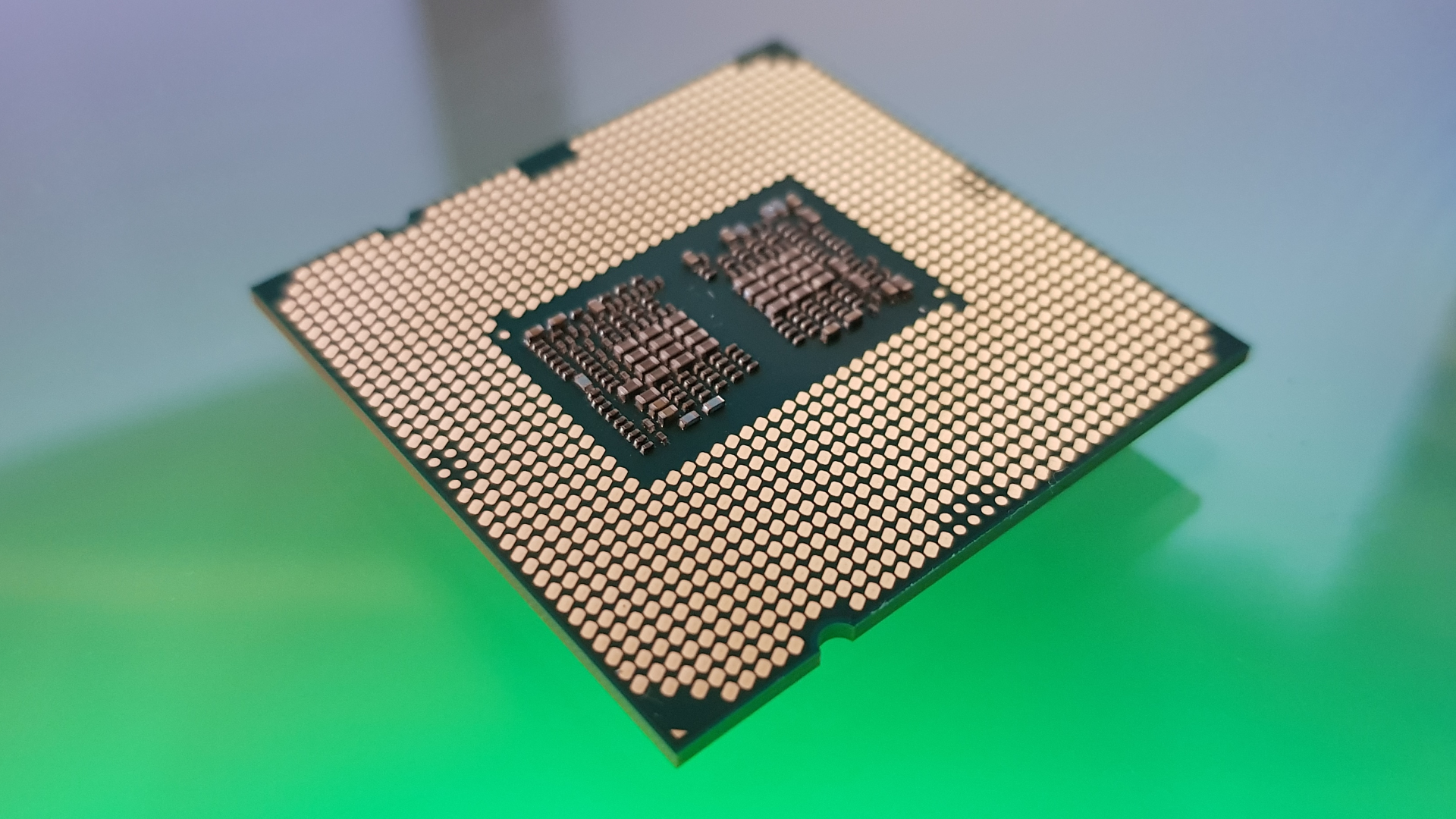
Core i9 10900K specs
The headline spec of the 10900K is the chip's core-count. With a full 10 CPU cores at the heart of it this is the first time, outside of the high-priced X-series chips, that Intel has managed to squeeze that many cores into one mainstream CPU. Throw in HyperThreading and you get 20 threads of processing power and, considering the high clock speeds attached to this deca-core chip, they're able to process a lot.
Keep up to date with the most important stories and the best deals, as picked by the PC Gamer team.
Cores - 10
Threads - 20
Lithography - 14nm
Base clock - 3.7GHz
Peak Turbo (single core) - 5.3GHz
Peak Turbo (all-core) - 4.9GHz
TDP - 125W
MSRP - $529 | £529
The base clock looks a little miserly at 3.7GHz, but realistically you're not going to see that in actual operation. Though the same could be said of the top-end 5.3GHz clock speed, delivered via a combination of Turbo Boost Max 3.0 and Thermal Velocity Boost. Those a pair of technologies adopted by Comet Lake's Core i9 processors, which offer higher frequencies should the thermals and power delivery allow.
Turbo Boost Max 3.0 has also traditionally only been available on the X-series CPUs, and works on a per-chip basis, highlighting which are the best cores in your particular package and putting the emphasis on them to provide the very highest performance. That will get the 10900K to 5.2GHz, but it's Thermal Velocity Boost that's meant to take it to 5.3GHz. Providing the chip is running below 70°C, and there is some turbo power available, TVB will allow you to reach the frequency promised land.
In our testing we only ever saw that 5.3GHz peak for a pico-second here and there during resolutely single-core operations. Generally workloads based on a core working solo would see a 5.2GHz clock speed, with all-core operations running at a solid 4.9GHz, even if there was significant thermal and power headroom. That's still a bit of a step up from the 4.7GHz of the Core i9 9900K, but an all-core step down from the 5GHz of the limited edition, blink-and-you'll-miss-it Core i9 9900KS.
So much of what makes the 10-core 10900K tick, and what makes it the world's fastest gaming processor™, is down to the power it consumes. Forget all the noises Intel is making about aiming for sustainable PCs, this Core i9 chip is all about unreasonable power and the 125W TDP is your first hint at that. In fact, all the K-series overclocking processors in the Comet Lake range have a 125W TDP, from Core i5 and up.

But that 125W figure is only part of the story. Thanks to all Intel's Boost-y shenanigans there are multiple different power limits, of which 125W is only the first. When it was being really pushed in my test system the 10900K was drawing almost 200W into the package itself. For short term turbo performance the chip can draw up to 250W of power in order to hit its peak frequencies. This is all that PL1, PL2, Tau stuff you might have read about ahead of launch, and it shows the top Comet Lake processors need that extra power to be able to keep taking this 14nm architecture forward in performance terms.
Of course a new CPU needs a new chipset, especially if you're Intel, and with Comet Lake comes the new Z490 platform with its new LGA 1200 socket. Physically the CPUs and socket look almost identical to the previous generations, and the extra 49 pins are there to improve power delivery for these hungry, hungry 10th Gen CPUs... and for future features.
Tantalisingly, the LGA 1200 socket and Z490 motherboards look to be compatible with the next generation of Intel CPUs too, those from the Rocket Lake range. Yes, another 'Lake', and yes another 14nm production process. But this one could be different if the rumours are to be believed. The speculation is that Rocket Lake will feature a 'back port', or new configuration, of the Willow Cove design coming to the advanced 10nm Tiger Lake mobile chips arriving later this year. That will make it the first time a desktop Intel CPU has had a Core architecture update in many a long year. It should also come with Intel Xe graphics silicon baked in too.
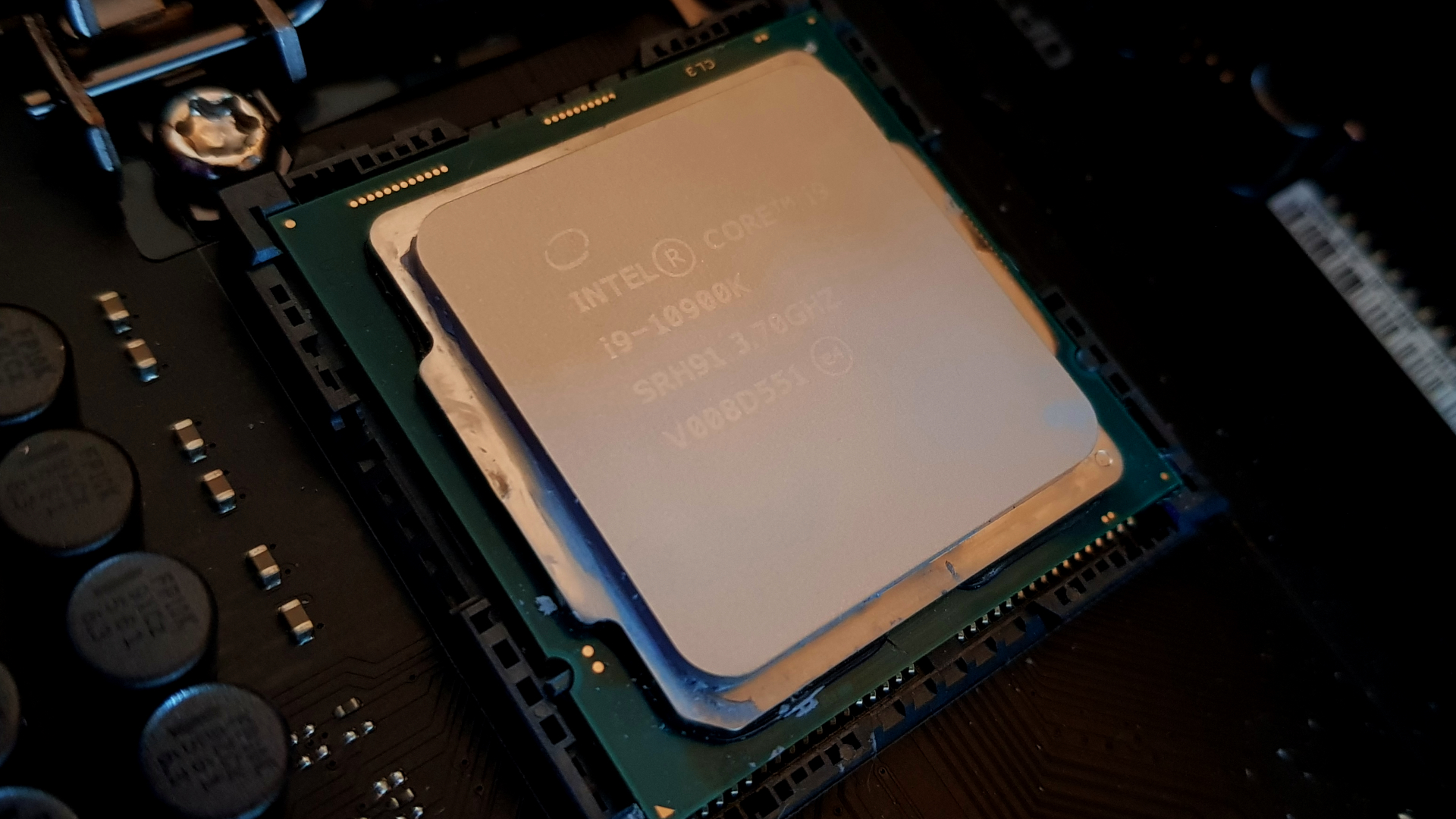
Core i9 10900K performance
There's no getting away from it, the new Comet Lake flagship is damned fast. Compared to the previous incumbent of the office of world's fastest gaming processor, the i9 9900KS, the 10900K either beats it or smashes it in every gaming benchmark we threw its way. Considering that in general terms the clock speeds aren't that dissimilar, and core counts generally don't make a huge difference to gaming performance, that's a bit of a surprise.
But the 10900K is now the go-to gaming CPU for the human with the innate need to have the absolute fastest version of everything, whether or not it makes as much of a difference to gaming as chip makers might have you believe. That's because really it's the graphics card that has the call over what sort of frame rate performance you're going to get out of your rig.
Sure, you need to have a decent processor to ensure your GPU gets fed with enough data to keep things running smoothly—pairing an Nvidia RTX 2080 Ti with an old dual-core Celeron is no recipe for gaming happiness—but when it comes to gaming above 1080p your CPU will have minimal impact on frame rates.
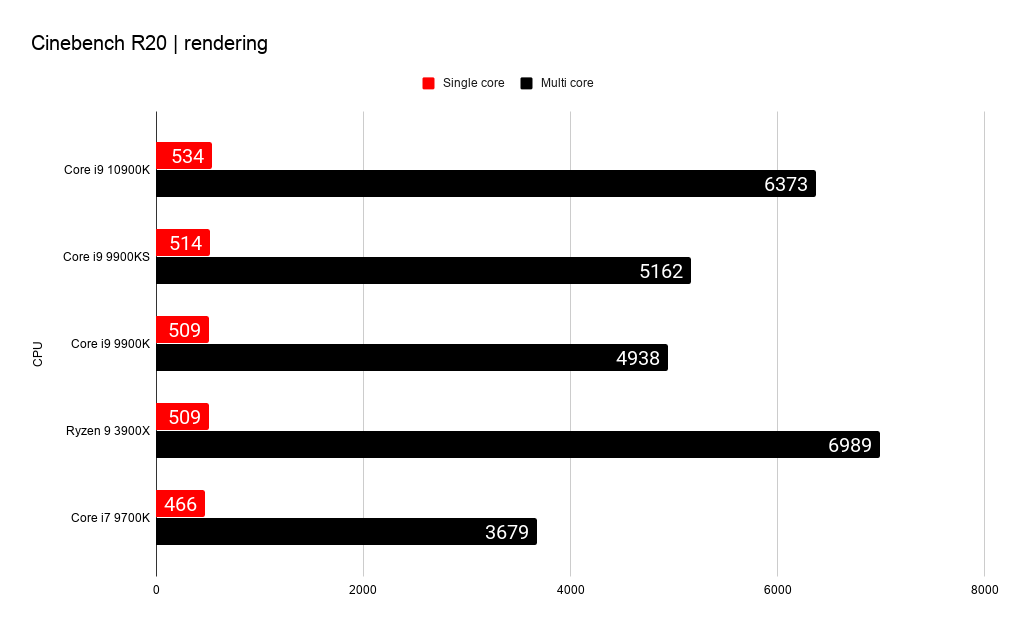

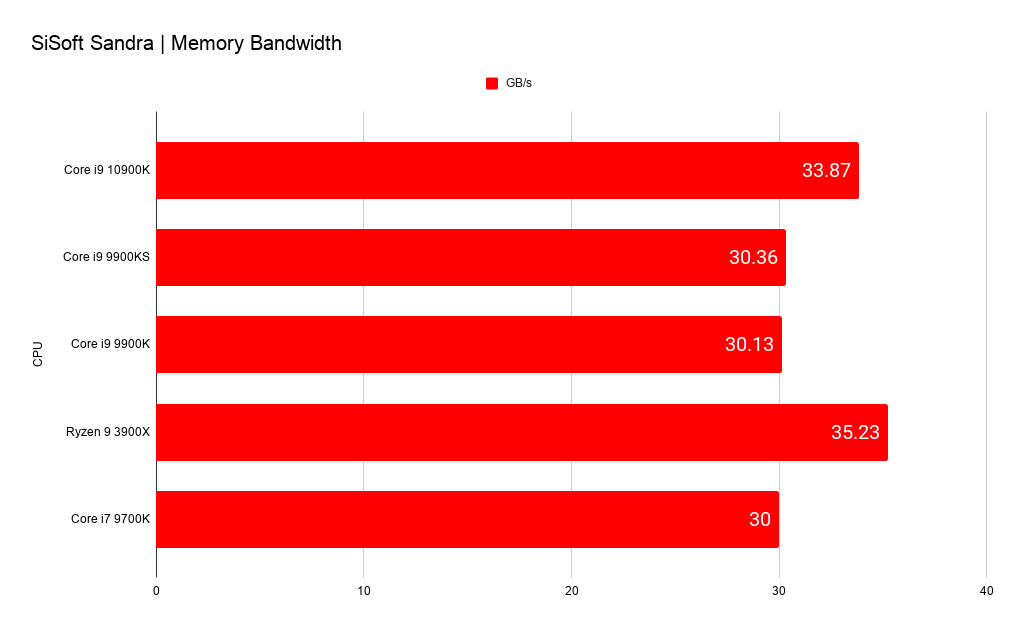
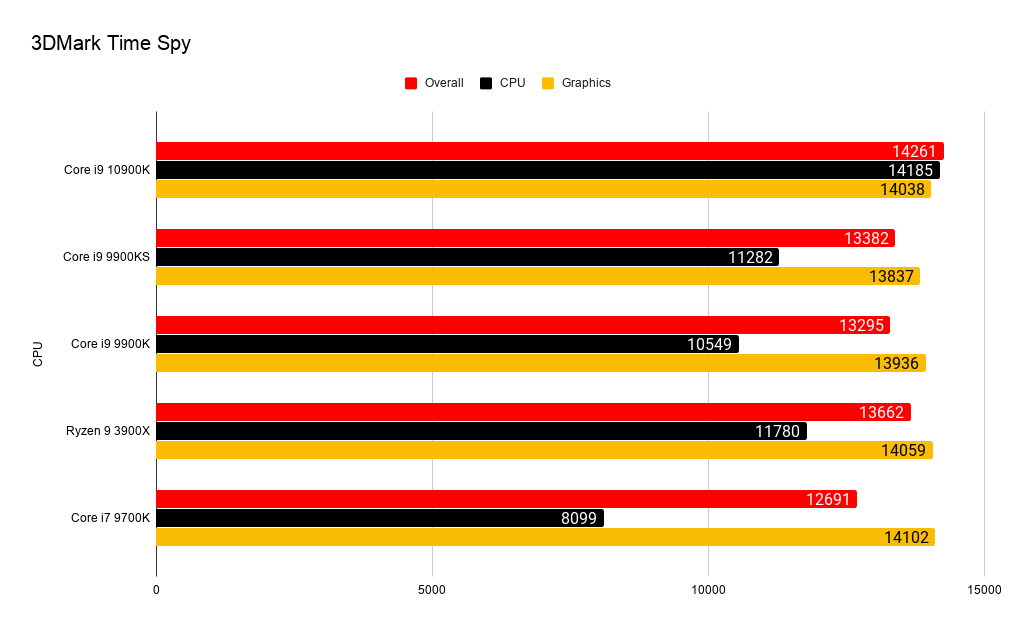
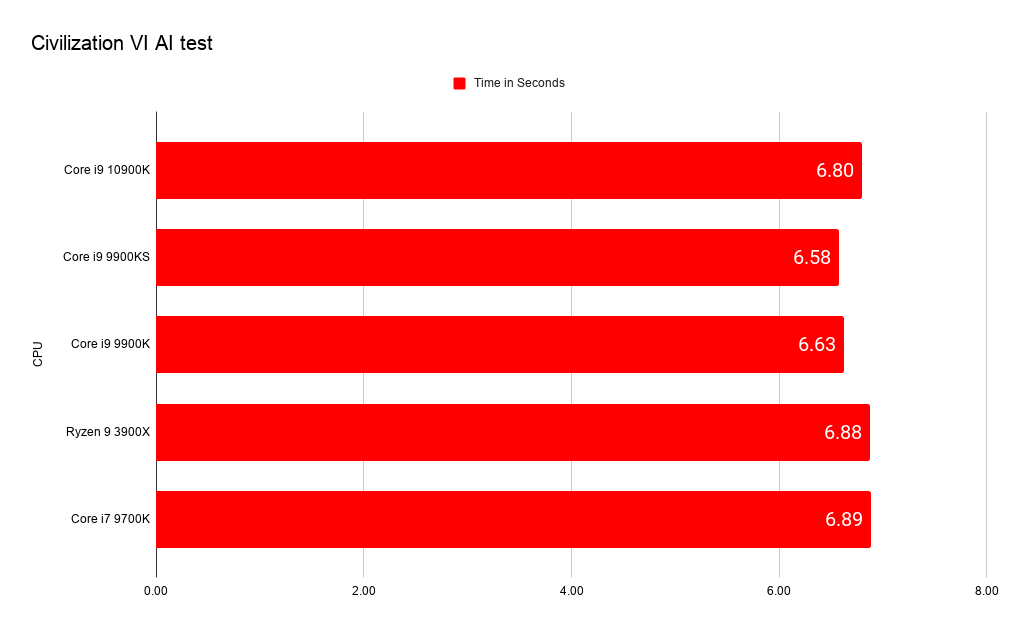

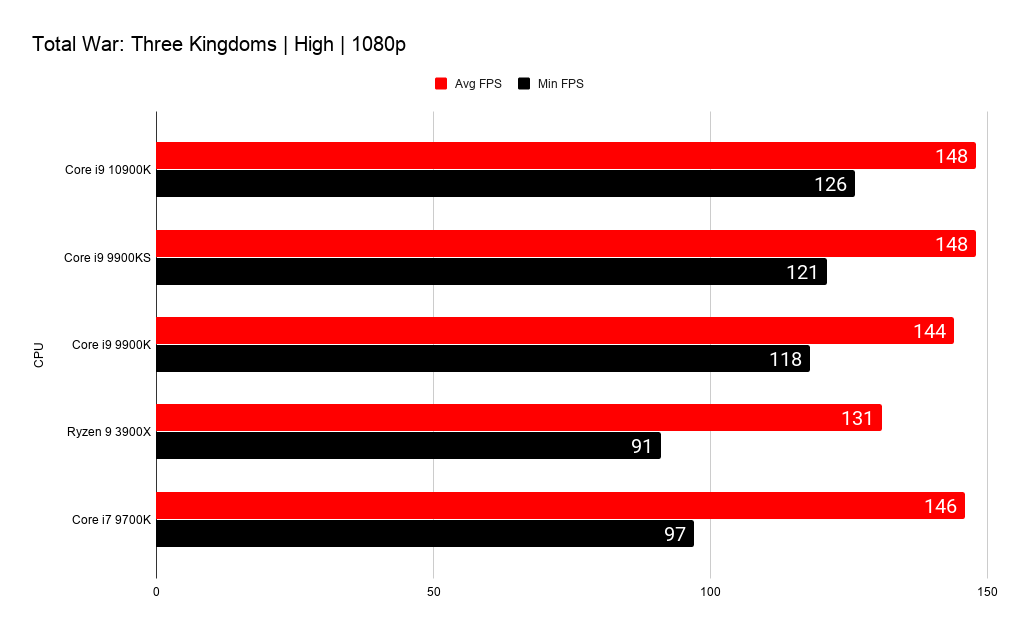
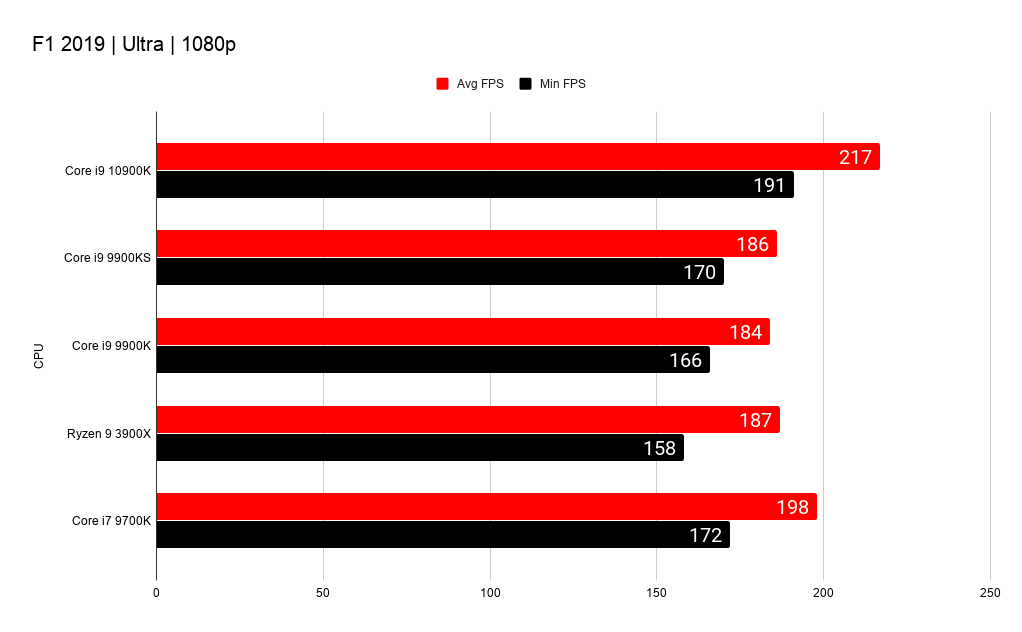
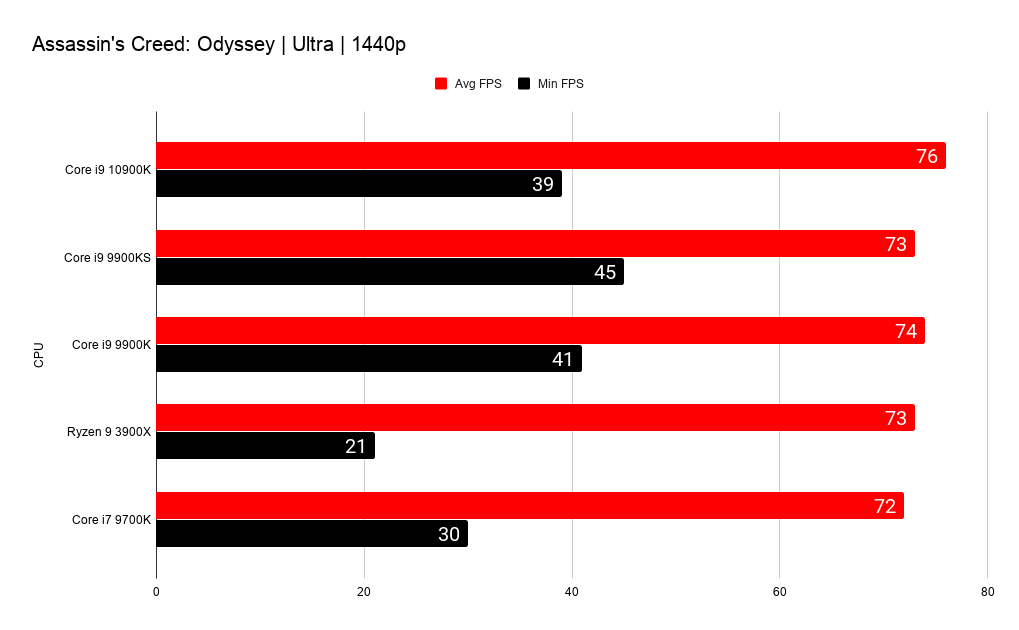

CPU - Intel Core i9 10900K
Cooler - NZXT Kraken Z63
Motherboard - Asus ROG Maximus XII Extreme
Memory - 32GB Corsair Vengeance RGB Pro @3,200MHz
GPU - Nvidia RTX 2080 Ti
Storage - 1TB Addlink S90
PSU - NZXT C850
That's why you'll see most of us benchmarking processors with games running at 1080p when we test a new chip, no matter if we've got a high-end GPU strapped to it. That gives us a chance to be able to highlight any potential performance differences there might be when a game is CPU-limited. In the real world however—y'know, where Intel likes to talk about real-world performance—the sort of graphics card you're going to be pairing a $500 CPU with isn't going to be one you'll be running at 1080p.
At 1440p, and especially at 4K resolutions, your games are inevitably going to be GPU-limited, so the performance you get won't be taxing your CPU, it will be almost entirely dependent on the power of your graphics card.
While the difference at 1080p in our benchmarks still shows the Core i9 10900K as the clear favourite, the performance delta gets mighty slight in the 1440p Assassin's Creed Odyssey and 4K Far Cry New Dawn results. The new Comet Lake chip is still in the lead, but now it's only by a few frames per second on average.
When it comes to the productivity side, however, the 10900K is clearly not the front-runner. With 10 cores and 20 threads it is the most powerful mainstream Intel chip, but the cheaper (now by around $100) AMD Ryzen 9 3900X shows its dominance in multi-threaded CPU tests. That's a $410 12-core, 24-thread processor that will still deliver competitive gaming performance in the GPU-bound, high-resolution games you're always going to be playing with it.
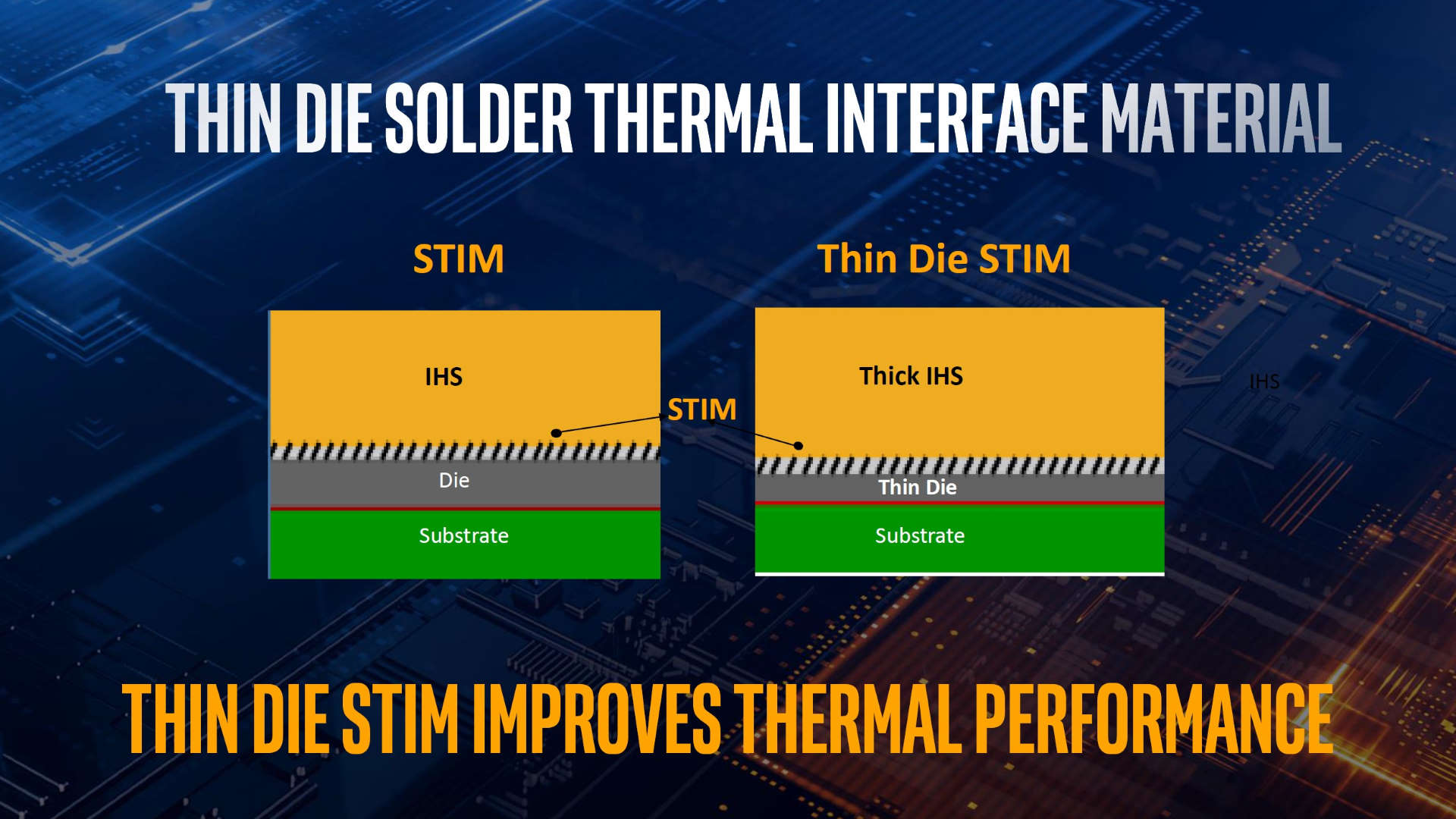
But what about overclocking? With the thin die STIM feature of the i9—essentially a thinner CPU die, with solder as the thermal interface material and a thicker heat spreader atop it—you're likely to see some decent OC headroom out of the 10900K. Though much of that headroom has already been stolen away by Intel itself in giving the flagship chip a 5.3GHz single-core peak.
I did manage to hit an all-core overclock of 5.4GHz with our chip, though that did require turning off HyperThreading to allow it operate without burning a hole through the motherboard. It also made no difference to gaming performance, running at that speed. Neither did actually getting the whole 10900K, all 20 threads of it, to run at a strong and stable 5.3GHz.
It made a big difference to the general CPU performance, but actually made our gaming frame rates drop. It also made a big difference to the amount of power the chip draws at peak. Even during a standard all-core run at 4.9GHz the 10900K will draw up to 198W alone, but when running at 5.3GHz during a testing run it pulls up to 331W. That's the chip alone, not the full platform power draw.
So while you can overclock the 10900K... you really shouldn't. Not for the gaming performance and not for the poor planet either.
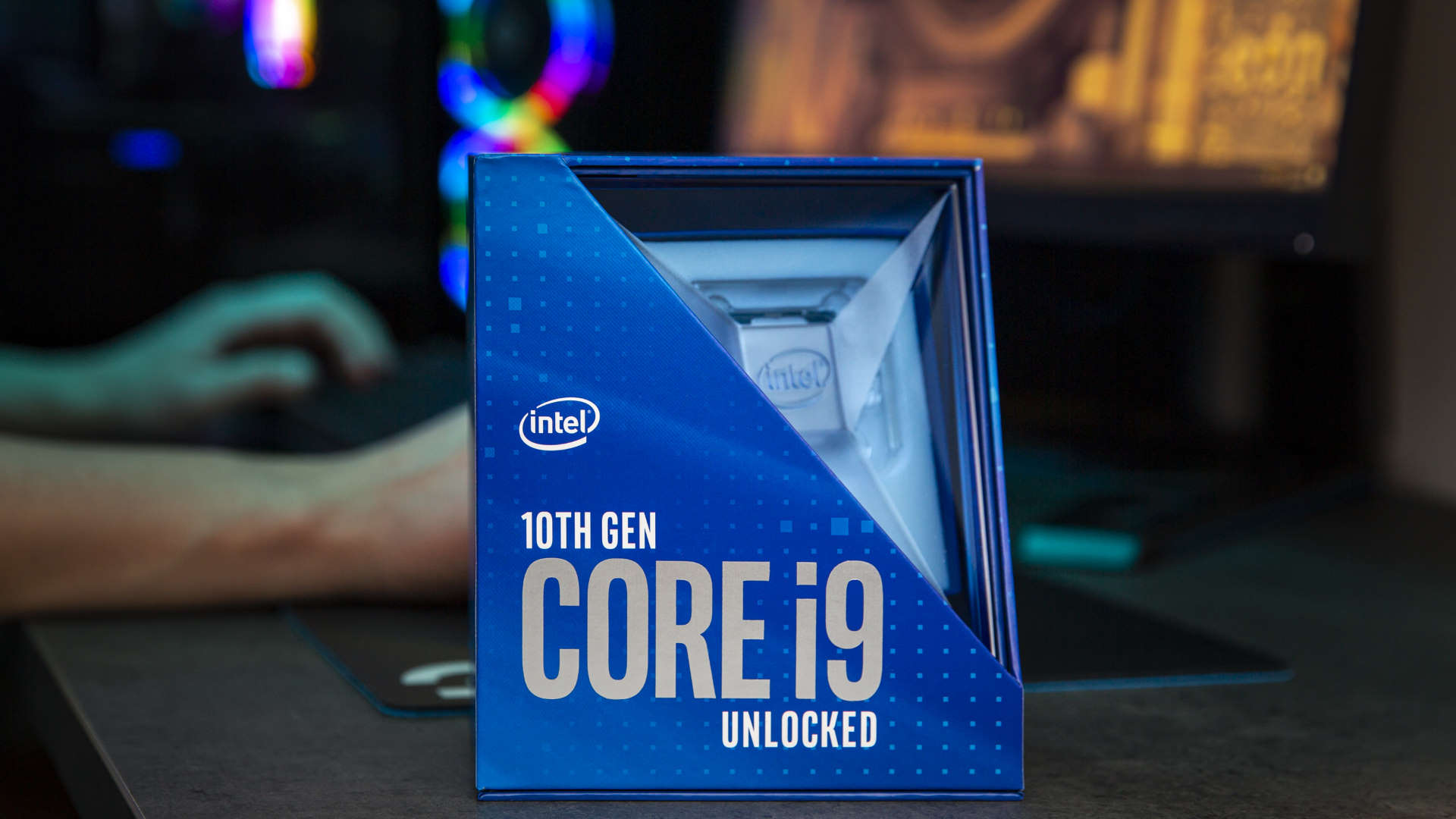
Core i9 10900K verdict
Intel's claims of having created the world's fastest gaming processor do bear up to scrutiny... again. This is the same trick it's pulled with the last few high-end CPU releases, with the 9900K and 9900KS, Intel has added another couple of cores to the 14nm mix and managed to squeeze ever-higher frequencies out of the old production process. Whether through brute force, industrial design, or liberal power management, it has created a CPU that can blaze past anything AMD can offer in terms of pure clock speed.
But, as with the 9900K, does having the fastest gaming processor really matter? With the graphics card doing most of the heavy lifting, at the sort of higher resolutions enthusiast gamers are going to be playing at, beyond a certain level the impact of the processor is pretty negligible.
This surely is as far as Intel can take its ageing 14nm pseudo-Skylake architecture.
And where AMD's Ryzen processors were once just 'good enough' to provide frame rates within ~10FPS of their Intel rivals, that gap has closed even as the frequency delta has expanded. Now there's often just a couple of frames per second on average in it when you step above 1080p.
Which all means you're only going to prioritise the 10900K as your CPU of choice as a gamer if you can't stand in good conscience buying a slice of silicon that isn't objectively the fastest, even if in reality it makes next to no difference. That's for the discerning DIY builder anyways, I can see a whole lot of pre-built gaming PCs being sold rocking Intel's finest.
So if the gaming promise is rather ephemeral, what of those extra cores and threads? They're nice, welcome even. But AMD has been playing the core count game for a long time, and it's mighty Zen 2 chiplet architecture has made it affordable to create, and to buy, CPUs with a number of cores that would be unthinkable outside of the server world even a few years ago.
With the AMD Zen 3 Ryzen 4000 CPUs set to arrive before the end of the year, the Ryzen 3000 chips are seeing some hefty discounts, and that means you can bag a 12-core Ryzen 9 3900X for $410 right now. If you're looking at the potential multi-threaded performance a 10-core Intel chip can offer, a 12-core processor that's some $120 cheaper will surely be turning your head.
Which all makes it easy to see Comet Lake's best chip as rather dull. It's top-end gaming performance scarcely matters, and it loses out to more affordable, higher core-count AMD CPUs in the productivity battle. This surely is as far as Intel can take its ageing 14nm pseudo-Skylake architecture.
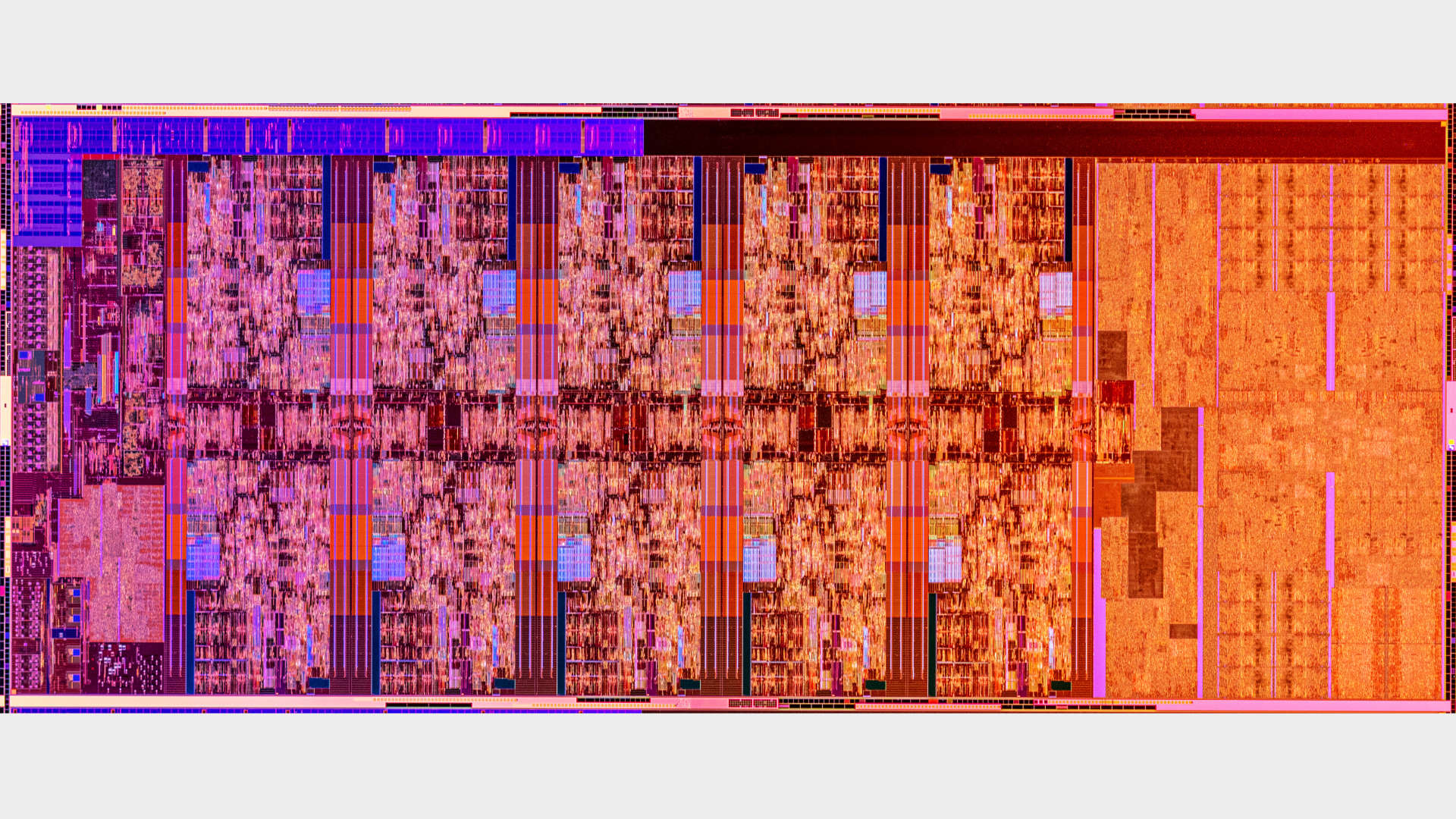
But it's still worth reminding ourselves just what Intel has managed in challenging circumstances. Sure, AMD is the little multi-billion dollar company done good, the underdog story, but Intel is still managing to cope magnificently with the failure of its 10nm process and the fact it's had to rely on a geriatric node for far too long. Self-inflicted wounds though they may be.
But it's still able to jam more cores in, it's still managing to increase out-of-the-box clock speeds, and it's still driving down power demands of equivalent chips… even if in some instances it massively drives up those demands too. All for the sake of headline-grabbing frequencies. Yet the fact that what is essentially a 5 year-old chip design is still able to sit at the top of the gaming CPU list is testament to what Intel built all that time ago. Though the flip side of that is that it also shows where Intel was maybe sandbagging until AMD started to really compete.
Compared with an old $989 Skylake 14nm 10-core chip, the Core i9 7900X, the difference is stark. At stock settings the 10900K absolutely smashes it on all counts and even clock-for-clock, with both running at 4GHz, the Comet Lake CPU is quicker, runs at half the temperature, and consumes 60W less juice at peak.
Three years after the 7900X topped the Intel CPU lists it has released a faster processor, on a new mainstream platform, for half the price.
But, when you have to rely on context to extol the virtues of a new slice of silicon when its overall performance isn't enough to rely on, that's almost damning the Core i9 10900K with faint praise. Technologically speaking it's an impressive chip, and it can legitimately wear its 'fastest gaming processor' badge with a certain pride, but I'd have a tough job really recommending it to anyone interested in value over more-or-less arbitrary marketing labels.
That's not how we'll come to view the rest of the Comet Lake lineup, however. This might be the flagship, but further down the stack Intel has created a range of gaming CPUs that will rightly dominate the coming months. Those will be the Comet Lake processors we'll remember.
The world's fastest gaming processor, and something that Intel will hang all its marketing on, but when it comes to real-world performance it doesn't really make a lot of sense as the Comet Lake CPU to drop into your gaming PC.

Dave has been gaming since the days of Zaxxon and Lady Bug on the Colecovision, and code books for the Commodore Vic 20 (Death Race 2000!). He built his first gaming PC at the tender age of 16, and finally finished bug-fixing the Cyrix-based system around a year later. When he dropped it out of the window. He first started writing for Official PlayStation Magazine and Xbox World many decades ago, then moved onto PC Format full-time, then PC Gamer, TechRadar, and T3 among others. Now he's back, writing about the nightmarish graphics card market, CPUs with more cores than sense, gaming laptops hotter than the sun, and SSDs more capacious than a Cybertruck.
